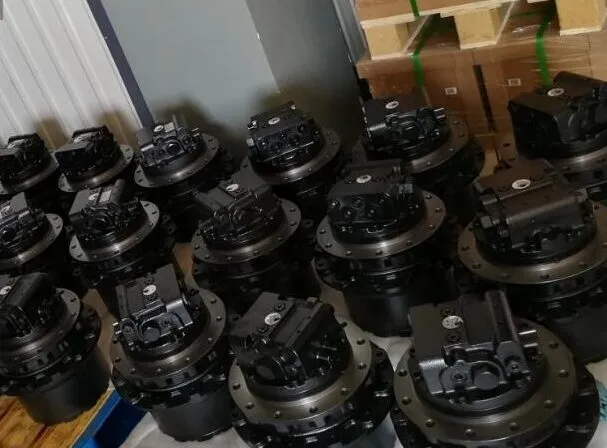
Travel motors are crucial components of excavators that allow these heavy machines to move and navigate various terrains. Proper maintenance and timely repairs of travel motors can significantly extend the life of your excavator and ensure its optimal performance. This guide provides a comprehensive look into how to repair excavator travel motors, including tools needed, step-by-step instructions, and some tips and tricks to help you along the way.
Travel motors are hydraulic motors that drive the tracks of an excavator. They play a critical role in the movement and maneuverability of the machine. These motors are usually mounted on the drive sprocket and work in conjunction with the hydraulic system to convert hydraulic energy into mechanical movement.
Travel motors are intricate systems that play a crucial role in the movement and operation of excavators. They consist of several key components, each of which must work in perfect harmony to ensure efficient and reliable performance.
First and foremost is the main hydraulic motor, which serves as the powerhouse of the travel motor system. This motor converts hydraulic energy into mechanical energy, driving the movement of the excavator’s tracks. The hydraulic motor’s efficiency and responsiveness are vital for the seamless operation of the excavator, allowing it to maneuver with precision and power.
Next are the planetary gears, a set of gears arranged in a specific configuration to multiply torque and reduce speed. These gears are essential for translating the high-speed input from the hydraulic motor into the lower-speed, high-torque output needed to drive the excavator’s tracks. The planetary gear system ensures that the power is transmitted efficiently and effectively, enabling the excavator to handle heavy loads and challenging terrains.
Bearings are another critical component of travel motors. They support the rotational movement of the gears and the motor shaft, reducing friction and wear. High-quality bearings are crucial for the longevity and smooth operation of the travel motor, as they help to distribute loads evenly and minimize mechanical resistance.
Seals play an important role in maintaining the integrity of the travel motor system. They prevent the ingress of dirt, debris, and water, which can cause damage and reduce the efficiency of the motor. Seals also help to retain the hydraulic fluid within the system, ensuring consistent performance and preventing leaks that could lead to operational issues.
Finally, the final drive assembly is the component that directly transmits the power from the travel motor to the excavator’s tracks. It includes a series of gears and shafts that further reduce the speed and increase the torque, providing the necessary force to move the tracks. The final drive assembly must be robust and durable to withstand the high stresses and loads encountered during excavator operation.
Travel motors can face a variety of issues, such as leaks, wear and tear, and mechanical failures. Identifying these problems early can help prevent more severe damage and costly repairs. Common symptoms of travel motor issues include unusual noises, decreased performance, and visible leaks.

Before starting the repair process, gather all necessary tools and equipment. This may include wrenches, screwdrivers, hydraulic fluid, replacement parts, and safety gear. Having everything ready will make the repair process smoother and more efficient.
Safety is paramount when working with heavy machinery. Ensure that the excavator is turned off and properly secured before beginning any repairs. Wear appropriate safety gear, such as gloves and eye protection, to prevent injuries.
Accurate diagnosis is crucial for effective repairs. Carefully inspect the travel motor and surrounding components to identify the root cause of the issue. This may involve checking for leaks, listening for unusual sounds, and testing the hydraulic system.
Perform regular inspections of the travel motor and surrounding components to catch potential issues early. This includes checking for leaks, listening for unusual noises, and monitoring the performance of the excavator.
Ensure that the travel motor and its components are properly lubricated. This helps reduce friction and wear, extending the life of the motor. Use high-quality hydraulic fluid and change it according to the manufacturer’s recommendations.
Don’t ignore warning signs of potential problems. Address issues promptly to prevent them from escalating into more severe damage. Regular maintenance and timely repairs can save you time and money in the long run.
Repairing excavator travel motors can be a complex task, but with the right tools, knowledge, and precautions, it is manageable. By understanding the components and common issues of travel motors, preparing adequately, and following a step-by-step repair process, you can ensure that your excavator remains in optimal working condition. Regular maintenance and prompt attention to issues will help extend the life of your travel motors and keep your excavator running smoothly.